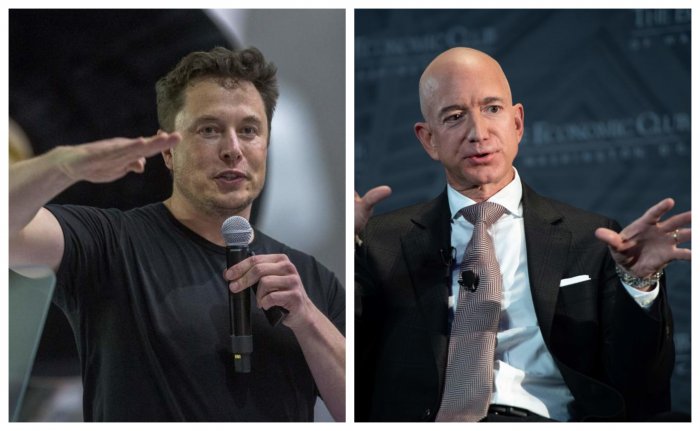Musk, CEO of SpaceX, and Bezos, the head of Amazon, are currently the two richest people in the world, but the two rich companies are quarreling over the competition for the satellite Internet business.
SpaceX accused Amazon of “suffering competition”; Amazon retorted, also saying that SpaceX attempted to “suffocate competition in the cradle”.
According to CNN, the core of the saw between the two sides is SpaceX’s recent desire to modify the Starlink license. The Star Chain is a huge Internet satellite group built by SpaceX. The U.S. federal government has authorized SpaceX to launch thousands of satellites, and more than 900 launches have been launched so far.
In a recent filing to the Federal Communications Commission (FCC), SpaceX said it hoped to place about 2,800 of these satellites at lower altitudes than previously planned or authorized.
The problem is that this will highly conflict with the target selected by Amazon’s Project Kuiper.
The U.S. Consumer News and Business Channel (CNBC) reported on the 26th that Amazon will invest more than $10 billion to realize the Kuiper plan.
At present, the Kuiper project has obtained FCC permission, but so far no satellite has been launched.
Kuiper’s plan includes putting 3,236 Amazon satellites into orbit about 590 kilometers from the earth’s surface, and SpaceX hopes that after its application for modification, it can operate nearly 3,000 “star chain satellites” at an altitude of 540 to 570 kilometers, directly to Amazon’s “sideside of the bed”.
” Amazon therefore said in its opposition that the “star chain satellite” at that altitude may cause more signal interference to the “Kuiber satellite” and other satellite networks nearby.
Amazon also pointed out in its filing to the FCC that the modification proposed by SpaceX may actually put the “star chain satellite” at risk of collision with the “Kuiber satellite”.
SpaceX told the FCC that the “Star Chain Satellite” will eventually end its mission within an approved altitude of 30 kilometers, which Amazon pointed out that this means that the “Star Chain Satellite” at an altitude of 560 to 570 kilometers may eventually enter the orbit of the Kuiper Satellite.
However, SpaceX publicly questioned Amazon’s objections.
David Goldman, head of spaceX satellite policy, said in a letter to the Federal Communications Commission on January 22 that Amazon reached these conclusions only on the basis of “biased data”.
It also “ignored most of the changes proposed by SpaceX”.
Musk himself tweeted: “It is not good for the public to make today’s star chain not work properly in order to make the Amazon satellite system run for at least a few years away.”
In a statement, Amazon made no weakness, accusing SpaceX of “these changes not only create a more dangerous environment that may lead to space collisions, but also increase radio interference to users”, “no matter what SpaceX posts on Twitter, the changes proposed by SpaceX will harm the satellite system. Competition between them.
It is obviously in SpaceX’s interest to strangle competition in the cradle, if you can, but certainly not in the public interest.”
According to FCC documents, SpaceX did agree to limit the height of the “Starlink Satellite” to “580 kilometers or less”, but the crux of the problem is that this restriction will only be implemented after Amazon begins to launch its own “Kuiber satellite”.
Before Amazon launched the satellite, it was completely unclear whether SpaceX complied with this regulation.
Amazon did not disclose when to launch the satellite, but the FCC license allowed the company to build at least half of its planned satellite constellation by July 2026.



